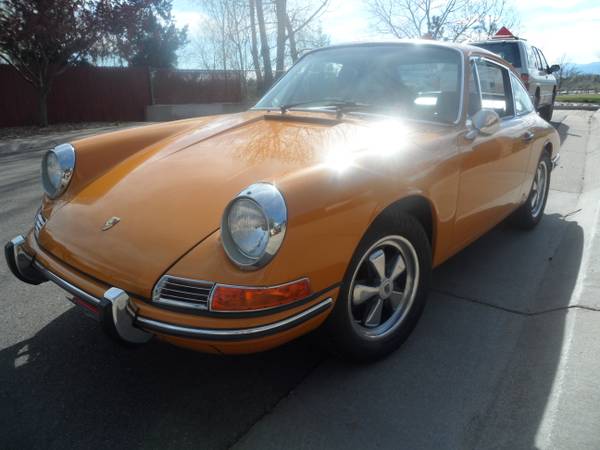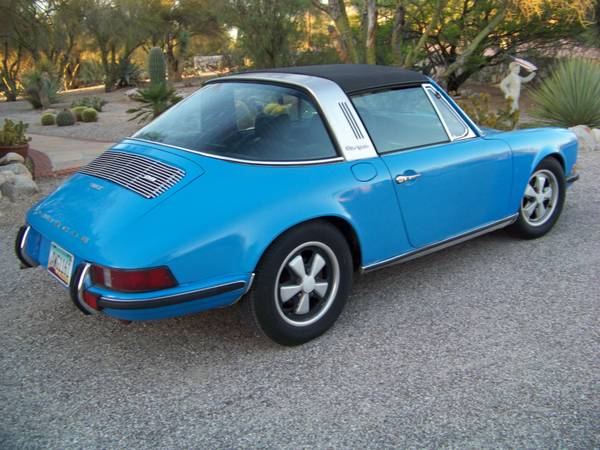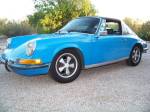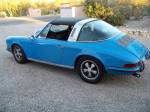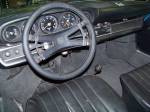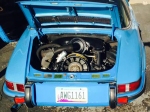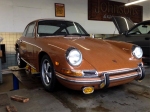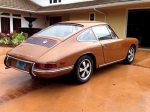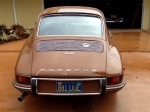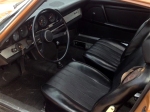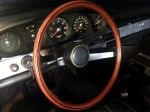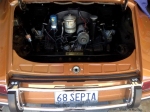While Porsche cars today are built entirely in its original Stuttgart factory as well as others in Finland and Slovakia, prior to the early 60s, its bodies were made by coachbuilders like Reutters, D’Iterien, Drauz, and Karmann before being assembled at the Zuffenhausen plant. After Porsche’s acquisition of Reutters, they continued to use Karmann for some 911 and 912 production (and later 914 and 968). There is some ürban legend that the Karmann bodies were lighter than the Porsche factory bodies, but this is more likely because most Karmann-built bodies were used in base 911, 911T and 912 production. These cars were more sparsely equipped—but only by perhaps a few kilos—than the 911S and 911L that were exclusive to the Porsche factory. In reality, a 911 built by Karmann is identical to a works one. There is also varying opinions that a 911 that’s pure Porsche should be worth more, while there’s a counter-argument that in an effort to win more of Porsche’s business, Karmann went beyond spec to build better cars. Fifty years later, it’s all minutia at best. An early 911 is highly collectible and very valuable. Period. In the last six months alone, actual sales prices have escalated an astonishing 15% and they continue to rise with even steeper growth. Simply put, there is no better investment in the automotive world—and very little outside of it—than an early 911. This example is a 1968 911 Karmann Coupe with an older restoration that has held up extremely well, with matching numbers against a Certificate of Authenticity. It is said to be absolutely rust-free with perfect paint and flawless interior. With just over 50,000 original miles on the clock and recent service that includes valve and carburetor adjustment, this is a car that doesn’t ignore these cars’ intent to be driven while looking exceptionally good. Bahama Yellow is perfect for the vintage and is a perennial favorite among Porsche collectors. It’s as good as it gets for under six figures. Find it here on Craigslist in Arvada CO for $85,000.
Tag: CoA
While the earlier short-wheelbase Porsche 911s have been in extraordinary demand lately, the “longhood” cars of 1972 remain some of the most coveted. 1972 brought fuel injection to the base 911 T (in the US) such that the full line, with the E and the S, now had MFI linked to the competent 2.4 liter motor. 1972 is also sought after as it was the only year that featured an external oil flap, located just aft of the passenger door. Aside from the visual difference, it correlated to the tank itself being moved in front of the rear wheels, which improved balance and handling, minimized oil surge and kept rocks and debris from damaging the shell. The rumor is that gas station attendants (which were still prevalent at the time)—unfamiliar with the location of the tank (and likely the motor as well)—assumed the flap was for gasoline and were no doubt surprised when the fuel quickly reached the top of the tank. Owners in turn were at least as surprised when their motors seized. Thus in 1973, Porsche returned the tank to its previous position and eliminated the flap. The ’72 E-Modelle and ’73 F-Modelle isn’t too far behind the earlier short-wheelbase cars, with recent auction prices eclipsing $100,000 for an S, $70-80K for an E and $60-70K for the Ts. This ’72 T Targa will need some love to bring it to that level, but it doesn’t appear far off. It has the matching numbers engine and transmission and appears to have an original interior, though it will need some attention including upholstery repair, dashboard (both relatively inexpensive), and door pockets (these aren’t cheap). In addition, while the floor pans look to be solid, it will need some rust repair in the undercarriage and typical areas on the body. Finally, given the thickness of paint on the car from numerous resprays, a quality bare-metal paint job would go a long way to bring the car up to a high standard (rust spots and skewed trim could be addressed at the same time). Besides the model year, its has some other pluses: its original Glacier Blue color is perfect for an early 70s 911 and it matches its Certificate of Authenticity. It has a well-documented history including the highly-prized maintenance book and ample service records. Furthermore, it is a nicely optioned car with S gauges and trim, leather steering wheel (swathed in an additional aftermarket cover in the photos), and tinted glass. The seller’s asking price of $45,000 is justifiable, albeit a little strong as there is work to be done and, despite their collectivity, they don’t fetch much in No. 3 or No. 4 driver condition. That said, the market continues to escalate and it won’t be long before anything under $50K is a bargain. Find it here on Craigslist in Tuscon AZ.
Anyone who has followed the market on the original short-wheelbase Porsche A Modelles can speak to their stratospheric appreciation, particularly since the recent Spring auctions. An SWB 911 is getting out of reach for most hobbyist collectors and becoming blue-chip. But there is a glimmer of hope. As it did when it was introduced in 1965, the 912 offers much of the same joys of owning a classic Porsche at prices that are still attainable. With their iconic looks, nimble handling and go-the-distance fuel economy, the Porsche 912 is a Cinderella story in the making. Finding a 912 that hasn’t been treated like the unworthy stepsister can be a grim task. Likewise, to bring one back to its deserved glory can be more trouble than its worth—literally. The 912 presented here has been exceptionally well preserved, with a numbers matching drivetrain, original interior and one repaint on a rust-free, accident-free body. Sepia Brown may not get a lot of love, but it is the original color and not at all out of character for a late 60s German sports car. It has some desirable options like original headrest and fog lamps as well as the expensive wood steering wheel (no mention whether that’s original but the forthcoming CoA will clarify). Pictured with the extra cost Fuchs, but correct stamped chrome steelies come with the car (which look more appropriate on a 912 anyway). It is said to be in an excellent mechanical state with recent tune up, carb cleaning and new gaskets, as well as new service distributor, belts, points and wires. It also has a reconditioned OEM gas tank, had brakes serviced and replaced all fluids, torsion bar bushings, battery, and OEM valve springs. Having been lowered two inches not only improves the already excellent handling of a 912, but makes it look more purposeful. It is being offered for sale by a noted early Porsche collector. Find it here on The Samba in Los Angeles CA for a reasonable $40,000.
